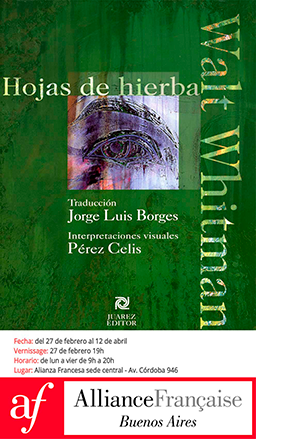HERENCIA. PROYECTO 360º AND THE RECONSIDERATION OF OUR ACTIONS
The Seville-based Fundación Valentín de Madariaga y Oya raises in its collective exhibition Herencia. Proyecto 360º the need to reconsider actions and return to the essential and almost primary link through the observation and analysis of our environment and its possibilities. The show gathers the work of fifteen international artists who become instrumental through their works for this purpose.
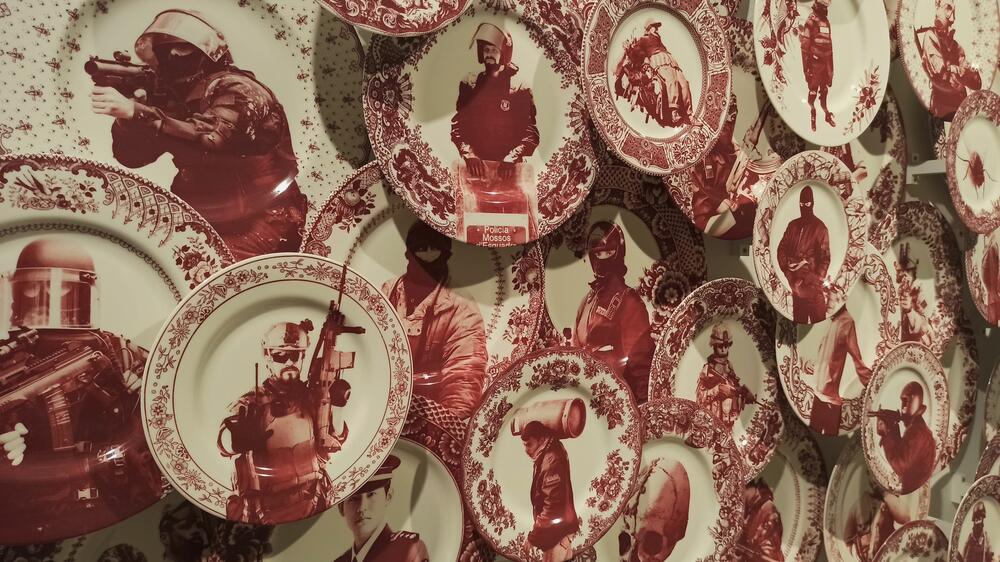
Although the concept could be framed in that double meaning of the word herencia (inheritance) through its becoming, the project maintains a vocation of sustainable character, or all that the meaning of that word may imply, especially focused on that critical analysis of the stability of social values and their impact and even, in a more physical point, the use of organic materials.
This section would mainly include the approaches proposed by Dutchman Pim Palsgraaf and Juan Gopar with their constructions made of discarded material and rescued for recycling with an ulterior aesthetic purpose. At the crossroads, the contributions of Día Muñoz (Guayaquil, Ecuador, 1989) —Organismos. Criaturas modificadas (2023) and Organismos. Simbiontes (2023)—, consolidating technological or pre-technological creatures with which he intercedes between the artificial and the natural, between science and the organic.
Dagoberto Rodriguez (Caibarien, Cuba, 1969) is another big name on the list of this exhibition. With his two works, Amphoras (2020) and Solar (2023), the Cuban lands his ironic conceptual and visual humour and provides the necessary vision and approach from the side of acid criticism. In that same reading, Carlos Aires' cynicism-laden porcelains contextualize a violence that is framed thanks to the support.
The pictorial work of César Barrio and Andrei Roiter, the devotion for the material of Bárbara Pérez and the support of Manuel Quintana, as well as the conceptual approaches of María Carrión, Macarena Gross, Antonio Murado, Isabel Valdecasas and Cachito Vallés complete this project that leads to a rereading of the most basic elements of our production and coexistence.
-
Herencia_ Carlos Aires_ detalle de Telediario III_2019 (foto Álvaro de Benito)
-
Herencia_ Carlos Aires_ detalle de Telediario III_2019 (foto Álvaro de Benito)
-
Herencia_ Día Muñoz_ Organismos. Simbionates_2023 (foto Álvaro de Benito) (1)
-
Herencia_ Vista de sala con las obras de Dagoberto Rodríguez (foto Álvaro de Benito) (1)
-
Herencia_Día Muñoz_ Organismos. Criatura modificada_ 2023 (foto Álvaro de Benito) (1)
Herencia. Proyecto 360º is on display until May 31 at the Valentín de Madariaga Foundation, Avenida de María Luisa, Seville, Spain.
Related Topics
May interest you
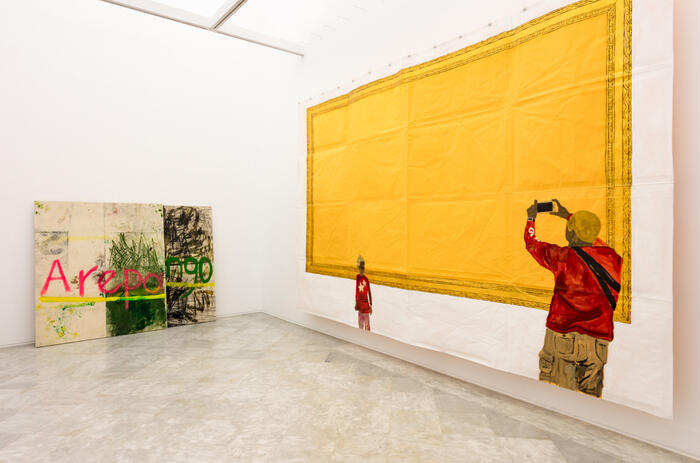
THE BALANCED REPRESENTATION OF LO LATINOAMERICANO IN THE JORGE M. PÉREZ COLLECTION

THE BALANCED REPRESENTATION OF LO LATINOAMERICANO IN THE JORGE M. PÉREZ COLLECTION
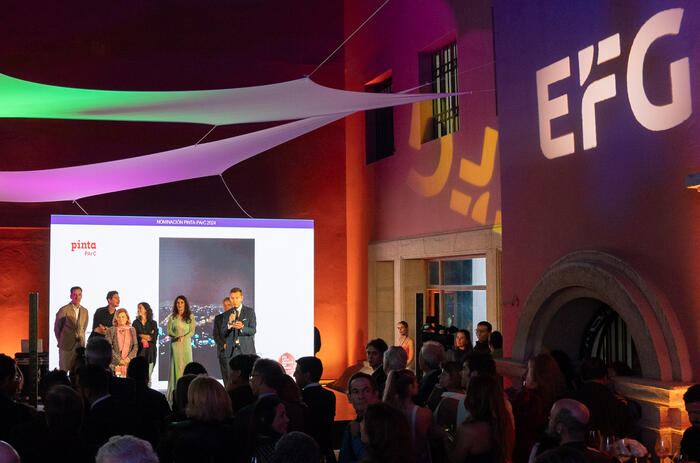
The EFG Latin America Art Award, in association with ArtNexus, announced Miguel Aguirre as Pinta PArC's nominated artist for the award.
MIGUEL AGUIRRE: PINTA PArC'S NOMINATED ARTIST FOR EFG LATIN AMERICA ART AWARD
The EFG Latin America Art Award, in association with ArtNexus, announced Miguel Aguirre as Pinta PArC's nominated artist for the award.
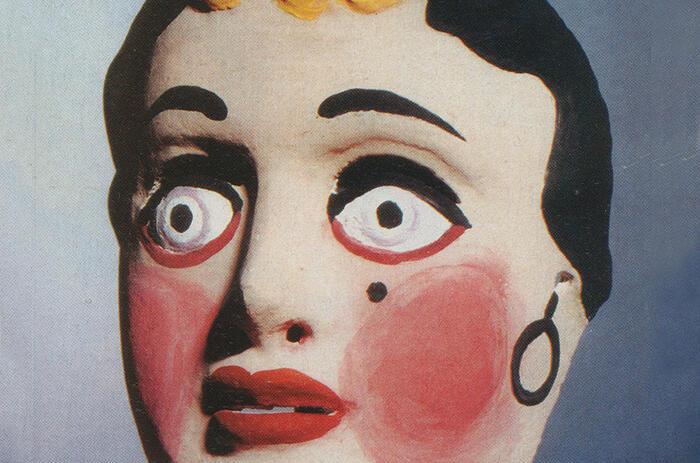
The NEXT section of Pinta PArC 2024 is set as a window to the Latin American emerging art scene, tracing a profound dialogue between diverse artistic systems and a dynamic collaboration with six galleries: Vigil Gonzales (Cusco and Buenos Aires), Salón Comunal (Bogotá), Enhorabuena Espacio (Madrid), Remota (Salta), Constitución (Buenos Aires) and Paseolab / Galería del Paseo (Lima and Punta del Este).
NEXT: VIBRANT PLATFORM AND TERRITORY FOR DIALOGUE
The NEXT section of Pinta PArC 2024 is set as a window to the Latin American emerging art scene, tracing a profound dialogue between diverse artistic systems and a dynamic collaboration with six galleries: Vigil Gonzales (Cusco and Buenos Aires), Salón Comunal (Bogotá), Enhorabuena Espacio (Madrid), Remota (Salta), Constitución (Buenos Aires) and Paseolab / Galería del Paseo (Lima and Punta del Este).
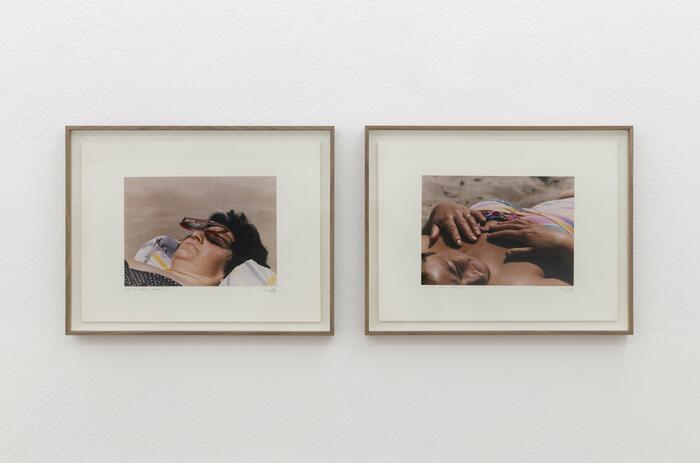
Zielinsky presents Trampantojo, a group exhibition formed by artists Nicolás Consuegra, Yamandú Canosa, Vera Chaves Barcellos, Martín Lanezan, Hudnilson Jr and Shirley Paes Leme.
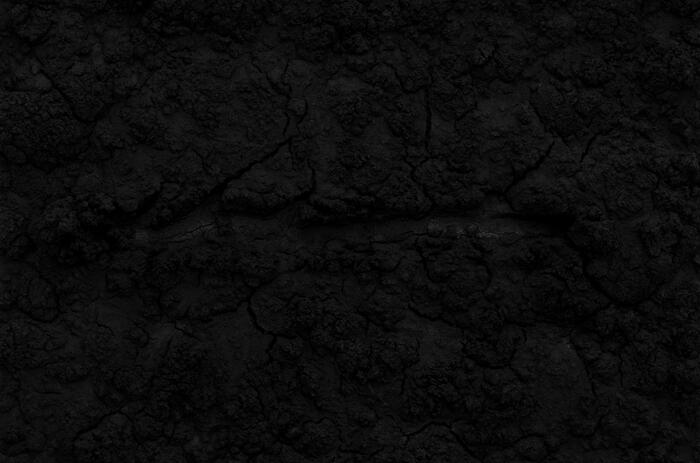
Bosco Sodi (Mexico, 1970) explores deeply in El día que nos volvimos a encontrar a universe quite distant from his recognizable large format and liveliness production to delve into the pleasures of the search for new material expressions and the abandonment of the chromatic in favour of texture, the depth of the absence of colour and concept.
BOSCO SODI AND THE VOLUME OF DARKNESS
Bosco Sodi (Mexico, 1970) explores deeply in El día que nos volvimos a encontrar a universe quite distant from his recognizable large format and liveliness production to delve into the pleasures of the search for new material expressions and the abandonment of the chromatic in favour of texture, the depth of the absence of colour and concept.
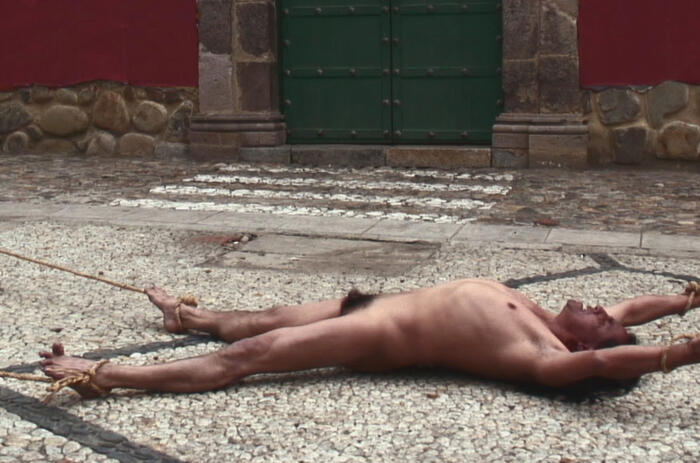
Valencian gallery Jorge Lopez is programming a solo exhibition by artist Claudia Joskowizc (Santa Cruz de la Sierra, Bolivia, 1968) that brings together the audiovisual and performative techniques with which the Bolivian artist builds the narrative and chronology of her native country.
CLAUDIA JOSKOWIZC, SOLO EXHBITION AT VALENCIA
Valencian gallery Jorge Lopez is programming a solo exhibition by artist Claudia Joskowizc (Santa Cruz de la Sierra, Bolivia, 1968) that brings together the audiovisual and performative techniques with which the Bolivian artist builds the narrative and chronology of her native country.
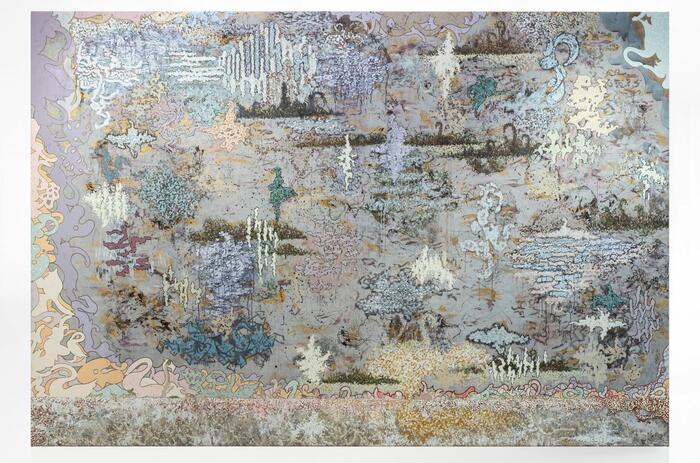
Flavio Garciandía (Caibarién, Cuba, 1954) becomes the active and passive subject of his work in his first solo exhibition in Madrid.
FLAVIO GARCIANDÍA’S SELF-REVISIONISM
Flavio Garciandía (Caibarién, Cuba, 1954) becomes the active and passive subject of his work in his first solo exhibition in Madrid.
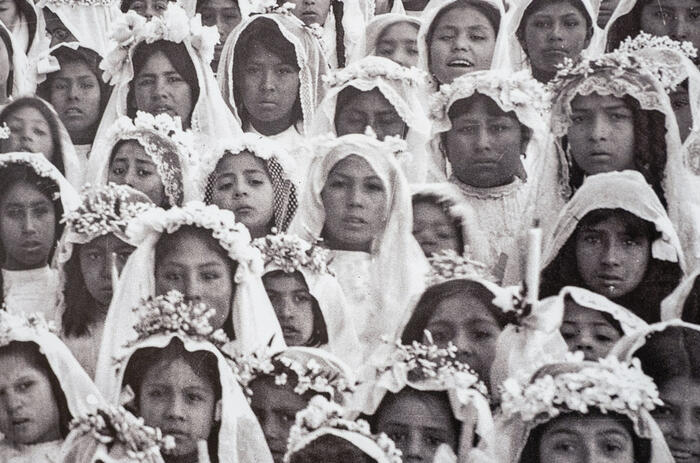
Casa de América inaugurated two exhibitions of Peruvian art: Memoria del Perú. Photographs 1890-1950, with works by various photographers that capture a significant period in the country's history, and Shipibo-Konibo. Portraits of my blood, with photographs by artist David Diaz on the life of the Shipibo-Konibo.
TWO EXHIBITIONS OF PERUVIAN PHOTOGRAPHY AT CASA DE AMERICA
Casa de América inaugurated two exhibitions of Peruvian art: Memoria del Perú. Photographs 1890-1950, with works by various photographers that capture a significant period in the country's history, and Shipibo-Konibo. Portraits of my blood, with photographs by artist David Diaz on the life of the Shipibo-Konibo.
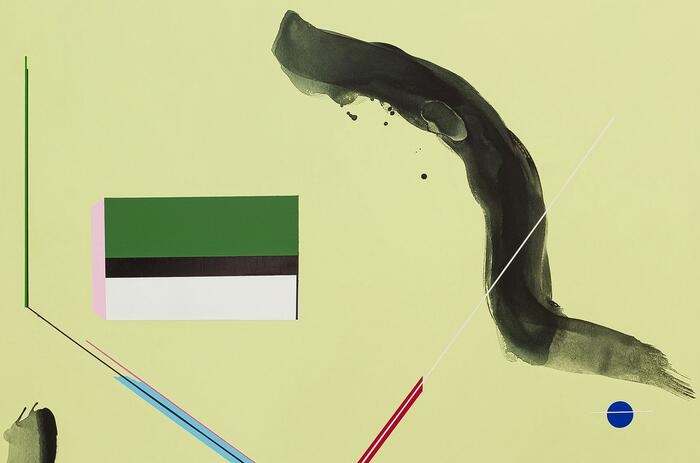
The geometry in Jorge Cabieses' (Lima, Peru, 1971) usual outline is broken with the action of the spontaneity of the curved and almost organic stroke in his second solo exhibition in the Spanish capital. The Lima-born artist thus proposes, in a certain way, a dialogue between the artificial of the synthetic and the atavistic through the incorporation of those more spontaneous brushstrokes over the usual framework of rectitude that the artist usually presents.
CABIESES’ INTERCEPTED IMAGE
The geometry in Jorge Cabieses' (Lima, Peru, 1971) usual outline is broken with the action of the spontaneity of the curved and almost organic stroke in his second solo exhibition in the Spanish capital. The Lima-born artist thus proposes, in a certain way, a dialogue between the artificial of the synthetic and the atavistic through the incorporation of those more spontaneous brushstrokes over the usual framework of rectitude that the artist usually presents.

Tania Pardo (Madrid, Spain, 1976) is the new Director of the Museo Centro de Arte Dos de Mayo (CA2M Museum), the museum of contemporary art of the Community of Madrid. Pardo's career until her recent appointment has been built on a detailed work of promotion and visibility of emerging art through the curatorial actions she has developed in numerous Spanish institutions.
INTERVIEW WITH TANIA PARDO, NEW DIRECTOR OF CA2M MUSEUM
Tania Pardo (Madrid, Spain, 1976) is the new Director of the Museo Centro de Arte Dos de Mayo (CA2M Museum), the museum of contemporary art of the Community of Madrid. Pardo's career until her recent appointment has been built on a detailed work of promotion and visibility of emerging art through the curatorial actions she has developed in numerous Spanish institutions.
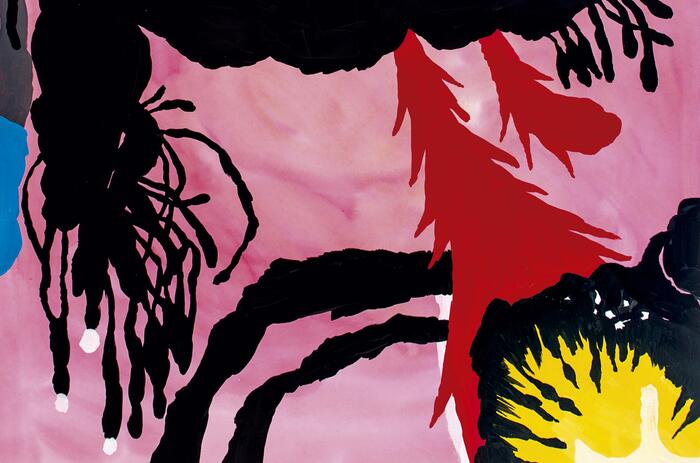
The Museo Extremeño e Iberoamericano de Arte Contemporáneo (MEIAC) in Badajoz is exhibiting, under the title Paisaje Transferido, a wide-ranging show by MartÍn Lopez Lam (Lima, Peru, 1981), one of the main exponents of graphic art in Spain, where he has been living for the last two decades.
MEIAC PRESENTS MARTÍN LÓPEZ LAM’S PAISAJE TRANSFERIDO
The Museo Extremeño e Iberoamericano de Arte Contemporáneo (MEIAC) in Badajoz is exhibiting, under the title Paisaje Transferido, a wide-ranging show by MartÍn Lopez Lam (Lima, Peru, 1981), one of the main exponents of graphic art in Spain, where he has been living for the last two decades.

The Guggenheim Museum Bilbao presents Metahaven. Chaos Theory. This is the first exhibition of the year in the Film & Video room, a space that the Museum dedicates entirely to video art, audiovisual installation and moving image as artistic languages, and which celebrates its tenth anniversary in 2024.
CHAOS THEORY AT THE GUGGENHEIM BILBAO
The Guggenheim Museum Bilbao presents Metahaven. Chaos Theory. This is the first exhibition of the year in the Film & Video room, a space that the Museum dedicates entirely to video art, audiovisual installation and moving image as artistic languages, and which celebrates its tenth anniversary in 2024.

It could have been an ordinary retrospective, but the decision to participate in some way in the creative process is a differential and even declarative point in Tembló acá un delirio, the exhibition that Museo CA2M in Móstoles delves into the figure, and at first hand, of Ana Gallardo (Rosario, Argentina, 1958).
ANA GALLARDO'S RECONSTRUCTION AND “DELIRIUM”
It could have been an ordinary retrospective, but the decision to participate in some way in the creative process is a differential and even declarative point in Tembló acá un delirio, the exhibition that Museo CA2M in Móstoles delves into the figure, and at first hand, of Ana Gallardo (Rosario, Argentina, 1958).

Héctor Canonge began to explore the possibilities of performance almost without being aware of it. With an extensive career in the field of new media and the art surrounding these technologies, and almost by inertia, he incorporates the use of his body in one of his installations, Schema CorpoReal, where his body covered by bar codes was scanned by the public so that, through texts that emerged referring to parts of his body, they ended up constructing a narrative of identity.
PERFORMANCE AND MYTH IN HECTOR CANONGE
Héctor Canonge began to explore the possibilities of performance almost without being aware of it. With an extensive career in the field of new media and the art surrounding these technologies, and almost by inertia, he incorporates the use of his body in one of his installations, Schema CorpoReal, where his body covered by bar codes was scanned by the public so that, through texts that emerged referring to parts of his body, they ended up constructing a narrative of identity.
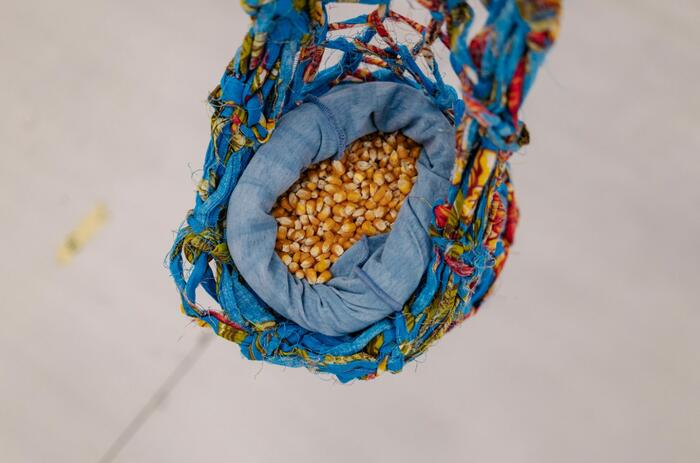
Ernesto Neto (Rio de Janeiro, Brazil, 1964) presents Nosso Barco Tambor Terra at Lisbon's Museum of Art, Architecture and Technology (MAAT), an impressive large-scale installation with which he evokes and stages the crossing of different cultures and the relationships between individuals from different continents.
ERNESTO NETO AND HIS CROSSROADS OF CULTURES AT MAAT
Ernesto Neto (Rio de Janeiro, Brazil, 1964) presents Nosso Barco Tambor Terra at Lisbon's Museum of Art, Architecture and Technology (MAAT), an impressive large-scale installation with which he evokes and stages the crossing of different cultures and the relationships between individuals from different continents.

Patricio Reig (San Juan, Argentina, 1952) exhibits at the Centre Cultural La Mercè in Girona Anatomía de la mirada, a proposal that deals with the dissection of the act of looking and its individual and subjective approach.
PATRICIO REIG AND THE ANATOMY OF THE GAZE
Patricio Reig (San Juan, Argentina, 1952) exhibits at the Centre Cultural La Mercè in Girona Anatomía de la mirada, a proposal that deals with the dissection of the act of looking and its individual and subjective approach.

THE BALANCED REPRESENTATION OF LO LATINOAMERICANO IN THE JORGE M. PÉREZ COLLECTION

The EFG Latin America Art Award, in association with ArtNexus, announced Miguel Aguirre as Pinta PArC's nominated artist for the award.
MIGUEL AGUIRRE: PINTA PArC'S NOMINATED ARTIST FOR EFG LATIN AMERICA ART AWARD
The EFG Latin America Art Award, in association with ArtNexus, announced Miguel Aguirre as Pinta PArC's nominated artist for the award.

The NEXT section of Pinta PArC 2024 is set as a window to the Latin American emerging art scene, tracing a profound dialogue between diverse artistic systems and a dynamic collaboration with six galleries: Vigil Gonzales (Cusco and Buenos Aires), Salón Comunal (Bogotá), Enhorabuena Espacio (Madrid), Remota (Salta), Constitución (Buenos Aires) and Paseolab / Galería del Paseo (Lima and Punta del Este).
NEXT: VIBRANT PLATFORM AND TERRITORY FOR DIALOGUE
The NEXT section of Pinta PArC 2024 is set as a window to the Latin American emerging art scene, tracing a profound dialogue between diverse artistic systems and a dynamic collaboration with six galleries: Vigil Gonzales (Cusco and Buenos Aires), Salón Comunal (Bogotá), Enhorabuena Espacio (Madrid), Remota (Salta), Constitución (Buenos Aires) and Paseolab / Galería del Paseo (Lima and Punta del Este).

Zielinsky presents Trampantojo, a group exhibition formed by artists Nicolás Consuegra, Yamandú Canosa, Vera Chaves Barcellos, Martín Lanezan, Hudnilson Jr and Shirley Paes Leme.

Bosco Sodi (Mexico, 1970) explores deeply in El día que nos volvimos a encontrar a universe quite distant from his recognizable large format and liveliness production to delve into the pleasures of the search for new material expressions and the abandonment of the chromatic in favour of texture, the depth of the absence of colour and concept.
BOSCO SODI AND THE VOLUME OF DARKNESS
Bosco Sodi (Mexico, 1970) explores deeply in El día que nos volvimos a encontrar a universe quite distant from his recognizable large format and liveliness production to delve into the pleasures of the search for new material expressions and the abandonment of the chromatic in favour of texture, the depth of the absence of colour and concept.

Valencian gallery Jorge Lopez is programming a solo exhibition by artist Claudia Joskowizc (Santa Cruz de la Sierra, Bolivia, 1968) that brings together the audiovisual and performative techniques with which the Bolivian artist builds the narrative and chronology of her native country.
CLAUDIA JOSKOWIZC, SOLO EXHBITION AT VALENCIA
Valencian gallery Jorge Lopez is programming a solo exhibition by artist Claudia Joskowizc (Santa Cruz de la Sierra, Bolivia, 1968) that brings together the audiovisual and performative techniques with which the Bolivian artist builds the narrative and chronology of her native country.

Flavio Garciandía (Caibarién, Cuba, 1954) becomes the active and passive subject of his work in his first solo exhibition in Madrid.
FLAVIO GARCIANDÍA’S SELF-REVISIONISM
Flavio Garciandía (Caibarién, Cuba, 1954) becomes the active and passive subject of his work in his first solo exhibition in Madrid.

Casa de América inaugurated two exhibitions of Peruvian art: Memoria del Perú. Photographs 1890-1950, with works by various photographers that capture a significant period in the country's history, and Shipibo-Konibo. Portraits of my blood, with photographs by artist David Diaz on the life of the Shipibo-Konibo.
TWO EXHIBITIONS OF PERUVIAN PHOTOGRAPHY AT CASA DE AMERICA
Casa de América inaugurated two exhibitions of Peruvian art: Memoria del Perú. Photographs 1890-1950, with works by various photographers that capture a significant period in the country's history, and Shipibo-Konibo. Portraits of my blood, with photographs by artist David Diaz on the life of the Shipibo-Konibo.

The geometry in Jorge Cabieses' (Lima, Peru, 1971) usual outline is broken with the action of the spontaneity of the curved and almost organic stroke in his second solo exhibition in the Spanish capital. The Lima-born artist thus proposes, in a certain way, a dialogue between the artificial of the synthetic and the atavistic through the incorporation of those more spontaneous brushstrokes over the usual framework of rectitude that the artist usually presents.
CABIESES’ INTERCEPTED IMAGE
The geometry in Jorge Cabieses' (Lima, Peru, 1971) usual outline is broken with the action of the spontaneity of the curved and almost organic stroke in his second solo exhibition in the Spanish capital. The Lima-born artist thus proposes, in a certain way, a dialogue between the artificial of the synthetic and the atavistic through the incorporation of those more spontaneous brushstrokes over the usual framework of rectitude that the artist usually presents.

Tania Pardo (Madrid, Spain, 1976) is the new Director of the Museo Centro de Arte Dos de Mayo (CA2M Museum), the museum of contemporary art of the Community of Madrid. Pardo's career until her recent appointment has been built on a detailed work of promotion and visibility of emerging art through the curatorial actions she has developed in numerous Spanish institutions.
INTERVIEW WITH TANIA PARDO, NEW DIRECTOR OF CA2M MUSEUM
Tania Pardo (Madrid, Spain, 1976) is the new Director of the Museo Centro de Arte Dos de Mayo (CA2M Museum), the museum of contemporary art of the Community of Madrid. Pardo's career until her recent appointment has been built on a detailed work of promotion and visibility of emerging art through the curatorial actions she has developed in numerous Spanish institutions.

The Museo Extremeño e Iberoamericano de Arte Contemporáneo (MEIAC) in Badajoz is exhibiting, under the title Paisaje Transferido, a wide-ranging show by MartÍn Lopez Lam (Lima, Peru, 1981), one of the main exponents of graphic art in Spain, where he has been living for the last two decades.
MEIAC PRESENTS MARTÍN LÓPEZ LAM’S PAISAJE TRANSFERIDO
The Museo Extremeño e Iberoamericano de Arte Contemporáneo (MEIAC) in Badajoz is exhibiting, under the title Paisaje Transferido, a wide-ranging show by MartÍn Lopez Lam (Lima, Peru, 1981), one of the main exponents of graphic art in Spain, where he has been living for the last two decades.

The Guggenheim Museum Bilbao presents Metahaven. Chaos Theory. This is the first exhibition of the year in the Film & Video room, a space that the Museum dedicates entirely to video art, audiovisual installation and moving image as artistic languages, and which celebrates its tenth anniversary in 2024.
CHAOS THEORY AT THE GUGGENHEIM BILBAO
The Guggenheim Museum Bilbao presents Metahaven. Chaos Theory. This is the first exhibition of the year in the Film & Video room, a space that the Museum dedicates entirely to video art, audiovisual installation and moving image as artistic languages, and which celebrates its tenth anniversary in 2024.

It could have been an ordinary retrospective, but the decision to participate in some way in the creative process is a differential and even declarative point in Tembló acá un delirio, the exhibition that Museo CA2M in Móstoles delves into the figure, and at first hand, of Ana Gallardo (Rosario, Argentina, 1958).
ANA GALLARDO'S RECONSTRUCTION AND “DELIRIUM”
It could have been an ordinary retrospective, but the decision to participate in some way in the creative process is a differential and even declarative point in Tembló acá un delirio, the exhibition that Museo CA2M in Móstoles delves into the figure, and at first hand, of Ana Gallardo (Rosario, Argentina, 1958).

Héctor Canonge began to explore the possibilities of performance almost without being aware of it. With an extensive career in the field of new media and the art surrounding these technologies, and almost by inertia, he incorporates the use of his body in one of his installations, Schema CorpoReal, where his body covered by bar codes was scanned by the public so that, through texts that emerged referring to parts of his body, they ended up constructing a narrative of identity.
PERFORMANCE AND MYTH IN HECTOR CANONGE
Héctor Canonge began to explore the possibilities of performance almost without being aware of it. With an extensive career in the field of new media and the art surrounding these technologies, and almost by inertia, he incorporates the use of his body in one of his installations, Schema CorpoReal, where his body covered by bar codes was scanned by the public so that, through texts that emerged referring to parts of his body, they ended up constructing a narrative of identity.

Ernesto Neto (Rio de Janeiro, Brazil, 1964) presents Nosso Barco Tambor Terra at Lisbon's Museum of Art, Architecture and Technology (MAAT), an impressive large-scale installation with which he evokes and stages the crossing of different cultures and the relationships between individuals from different continents.
ERNESTO NETO AND HIS CROSSROADS OF CULTURES AT MAAT
Ernesto Neto (Rio de Janeiro, Brazil, 1964) presents Nosso Barco Tambor Terra at Lisbon's Museum of Art, Architecture and Technology (MAAT), an impressive large-scale installation with which he evokes and stages the crossing of different cultures and the relationships between individuals from different continents.

Patricio Reig (San Juan, Argentina, 1952) exhibits at the Centre Cultural La Mercè in Girona Anatomía de la mirada, a proposal that deals with the dissection of the act of looking and its individual and subjective approach.
PATRICIO REIG AND THE ANATOMY OF THE GAZE
Patricio Reig (San Juan, Argentina, 1952) exhibits at the Centre Cultural La Mercè in Girona Anatomía de la mirada, a proposal that deals with the dissection of the act of looking and its individual and subjective approach.

THE BALANCED REPRESENTATION OF LO LATINOAMERICANO IN THE JORGE M. PÉREZ COLLECTION

The EFG Latin America Art Award, in association with ArtNexus, announced Miguel Aguirre as Pinta PArC's nominated artist for the award.
MIGUEL AGUIRRE: PINTA PArC'S NOMINATED ARTIST FOR EFG LATIN AMERICA ART AWARD
The EFG Latin America Art Award, in association with ArtNexus, announced Miguel Aguirre as Pinta PArC's nominated artist for the award.

The NEXT section of Pinta PArC 2024 is set as a window to the Latin American emerging art scene, tracing a profound dialogue between diverse artistic systems and a dynamic collaboration with six galleries: Vigil Gonzales (Cusco and Buenos Aires), Salón Comunal (Bogotá), Enhorabuena Espacio (Madrid), Remota (Salta), Constitución (Buenos Aires) and Paseolab / Galería del Paseo (Lima and Punta del Este).
NEXT: VIBRANT PLATFORM AND TERRITORY FOR DIALOGUE
The NEXT section of Pinta PArC 2024 is set as a window to the Latin American emerging art scene, tracing a profound dialogue between diverse artistic systems and a dynamic collaboration with six galleries: Vigil Gonzales (Cusco and Buenos Aires), Salón Comunal (Bogotá), Enhorabuena Espacio (Madrid), Remota (Salta), Constitución (Buenos Aires) and Paseolab / Galería del Paseo (Lima and Punta del Este).

Zielinsky presents Trampantojo, a group exhibition formed by artists Nicolás Consuegra, Yamandú Canosa, Vera Chaves Barcellos, Martín Lanezan, Hudnilson Jr and Shirley Paes Leme.

Bosco Sodi (Mexico, 1970) explores deeply in El día que nos volvimos a encontrar a universe quite distant from his recognizable large format and liveliness production to delve into the pleasures of the search for new material expressions and the abandonment of the chromatic in favour of texture, the depth of the absence of colour and concept.
BOSCO SODI AND THE VOLUME OF DARKNESS
Bosco Sodi (Mexico, 1970) explores deeply in El día que nos volvimos a encontrar a universe quite distant from his recognizable large format and liveliness production to delve into the pleasures of the search for new material expressions and the abandonment of the chromatic in favour of texture, the depth of the absence of colour and concept.

Valencian gallery Jorge Lopez is programming a solo exhibition by artist Claudia Joskowizc (Santa Cruz de la Sierra, Bolivia, 1968) that brings together the audiovisual and performative techniques with which the Bolivian artist builds the narrative and chronology of her native country.
CLAUDIA JOSKOWIZC, SOLO EXHBITION AT VALENCIA
Valencian gallery Jorge Lopez is programming a solo exhibition by artist Claudia Joskowizc (Santa Cruz de la Sierra, Bolivia, 1968) that brings together the audiovisual and performative techniques with which the Bolivian artist builds the narrative and chronology of her native country.

Flavio Garciandía (Caibarién, Cuba, 1954) becomes the active and passive subject of his work in his first solo exhibition in Madrid.
FLAVIO GARCIANDÍA’S SELF-REVISIONISM
Flavio Garciandía (Caibarién, Cuba, 1954) becomes the active and passive subject of his work in his first solo exhibition in Madrid.

Casa de América inaugurated two exhibitions of Peruvian art: Memoria del Perú. Photographs 1890-1950, with works by various photographers that capture a significant period in the country's history, and Shipibo-Konibo. Portraits of my blood, with photographs by artist David Diaz on the life of the Shipibo-Konibo.
TWO EXHIBITIONS OF PERUVIAN PHOTOGRAPHY AT CASA DE AMERICA
Casa de América inaugurated two exhibitions of Peruvian art: Memoria del Perú. Photographs 1890-1950, with works by various photographers that capture a significant period in the country's history, and Shipibo-Konibo. Portraits of my blood, with photographs by artist David Diaz on the life of the Shipibo-Konibo.

The geometry in Jorge Cabieses' (Lima, Peru, 1971) usual outline is broken with the action of the spontaneity of the curved and almost organic stroke in his second solo exhibition in the Spanish capital. The Lima-born artist thus proposes, in a certain way, a dialogue between the artificial of the synthetic and the atavistic through the incorporation of those more spontaneous brushstrokes over the usual framework of rectitude that the artist usually presents.
CABIESES’ INTERCEPTED IMAGE
The geometry in Jorge Cabieses' (Lima, Peru, 1971) usual outline is broken with the action of the spontaneity of the curved and almost organic stroke in his second solo exhibition in the Spanish capital. The Lima-born artist thus proposes, in a certain way, a dialogue between the artificial of the synthetic and the atavistic through the incorporation of those more spontaneous brushstrokes over the usual framework of rectitude that the artist usually presents.

Tania Pardo (Madrid, Spain, 1976) is the new Director of the Museo Centro de Arte Dos de Mayo (CA2M Museum), the museum of contemporary art of the Community of Madrid. Pardo's career until her recent appointment has been built on a detailed work of promotion and visibility of emerging art through the curatorial actions she has developed in numerous Spanish institutions.
INTERVIEW WITH TANIA PARDO, NEW DIRECTOR OF CA2M MUSEUM
Tania Pardo (Madrid, Spain, 1976) is the new Director of the Museo Centro de Arte Dos de Mayo (CA2M Museum), the museum of contemporary art of the Community of Madrid. Pardo's career until her recent appointment has been built on a detailed work of promotion and visibility of emerging art through the curatorial actions she has developed in numerous Spanish institutions.

The Museo Extremeño e Iberoamericano de Arte Contemporáneo (MEIAC) in Badajoz is exhibiting, under the title Paisaje Transferido, a wide-ranging show by MartÍn Lopez Lam (Lima, Peru, 1981), one of the main exponents of graphic art in Spain, where he has been living for the last two decades.
MEIAC PRESENTS MARTÍN LÓPEZ LAM’S PAISAJE TRANSFERIDO
The Museo Extremeño e Iberoamericano de Arte Contemporáneo (MEIAC) in Badajoz is exhibiting, under the title Paisaje Transferido, a wide-ranging show by MartÍn Lopez Lam (Lima, Peru, 1981), one of the main exponents of graphic art in Spain, where he has been living for the last two decades.

The Guggenheim Museum Bilbao presents Metahaven. Chaos Theory. This is the first exhibition of the year in the Film & Video room, a space that the Museum dedicates entirely to video art, audiovisual installation and moving image as artistic languages, and which celebrates its tenth anniversary in 2024.
CHAOS THEORY AT THE GUGGENHEIM BILBAO
The Guggenheim Museum Bilbao presents Metahaven. Chaos Theory. This is the first exhibition of the year in the Film & Video room, a space that the Museum dedicates entirely to video art, audiovisual installation and moving image as artistic languages, and which celebrates its tenth anniversary in 2024.

It could have been an ordinary retrospective, but the decision to participate in some way in the creative process is a differential and even declarative point in Tembló acá un delirio, the exhibition that Museo CA2M in Móstoles delves into the figure, and at first hand, of Ana Gallardo (Rosario, Argentina, 1958).
ANA GALLARDO'S RECONSTRUCTION AND “DELIRIUM”
It could have been an ordinary retrospective, but the decision to participate in some way in the creative process is a differential and even declarative point in Tembló acá un delirio, the exhibition that Museo CA2M in Móstoles delves into the figure, and at first hand, of Ana Gallardo (Rosario, Argentina, 1958).

Héctor Canonge began to explore the possibilities of performance almost without being aware of it. With an extensive career in the field of new media and the art surrounding these technologies, and almost by inertia, he incorporates the use of his body in one of his installations, Schema CorpoReal, where his body covered by bar codes was scanned by the public so that, through texts that emerged referring to parts of his body, they ended up constructing a narrative of identity.
PERFORMANCE AND MYTH IN HECTOR CANONGE
Héctor Canonge began to explore the possibilities of performance almost without being aware of it. With an extensive career in the field of new media and the art surrounding these technologies, and almost by inertia, he incorporates the use of his body in one of his installations, Schema CorpoReal, where his body covered by bar codes was scanned by the public so that, through texts that emerged referring to parts of his body, they ended up constructing a narrative of identity.

Ernesto Neto (Rio de Janeiro, Brazil, 1964) presents Nosso Barco Tambor Terra at Lisbon's Museum of Art, Architecture and Technology (MAAT), an impressive large-scale installation with which he evokes and stages the crossing of different cultures and the relationships between individuals from different continents.
ERNESTO NETO AND HIS CROSSROADS OF CULTURES AT MAAT
Ernesto Neto (Rio de Janeiro, Brazil, 1964) presents Nosso Barco Tambor Terra at Lisbon's Museum of Art, Architecture and Technology (MAAT), an impressive large-scale installation with which he evokes and stages the crossing of different cultures and the relationships between individuals from different continents.

Patricio Reig (San Juan, Argentina, 1952) exhibits at the Centre Cultural La Mercè in Girona Anatomía de la mirada, a proposal that deals with the dissection of the act of looking and its individual and subjective approach.
PATRICIO REIG AND THE ANATOMY OF THE GAZE
Patricio Reig (San Juan, Argentina, 1952) exhibits at the Centre Cultural La Mercè in Girona Anatomía de la mirada, a proposal that deals with the dissection of the act of looking and its individual and subjective approach.

THE BALANCED REPRESENTATION OF LO LATINOAMERICANO IN THE JORGE M. PÉREZ COLLECTION

The EFG Latin America Art Award, in association with ArtNexus, announced Miguel Aguirre as Pinta PArC's nominated artist for the award.
MIGUEL AGUIRRE: PINTA PArC'S NOMINATED ARTIST FOR EFG LATIN AMERICA ART AWARD
The EFG Latin America Art Award, in association with ArtNexus, announced Miguel Aguirre as Pinta PArC's nominated artist for the award.

The NEXT section of Pinta PArC 2024 is set as a window to the Latin American emerging art scene, tracing a profound dialogue between diverse artistic systems and a dynamic collaboration with six galleries: Vigil Gonzales (Cusco and Buenos Aires), Salón Comunal (Bogotá), Enhorabuena Espacio (Madrid), Remota (Salta), Constitución (Buenos Aires) and Paseolab / Galería del Paseo (Lima and Punta del Este).
NEXT: VIBRANT PLATFORM AND TERRITORY FOR DIALOGUE
The NEXT section of Pinta PArC 2024 is set as a window to the Latin American emerging art scene, tracing a profound dialogue between diverse artistic systems and a dynamic collaboration with six galleries: Vigil Gonzales (Cusco and Buenos Aires), Salón Comunal (Bogotá), Enhorabuena Espacio (Madrid), Remota (Salta), Constitución (Buenos Aires) and Paseolab / Galería del Paseo (Lima and Punta del Este).

Zielinsky presents Trampantojo, a group exhibition formed by artists Nicolás Consuegra, Yamandú Canosa, Vera Chaves Barcellos, Martín Lanezan, Hudnilson Jr and Shirley Paes Leme.

Bosco Sodi (Mexico, 1970) explores deeply in El día que nos volvimos a encontrar a universe quite distant from his recognizable large format and liveliness production to delve into the pleasures of the search for new material expressions and the abandonment of the chromatic in favour of texture, the depth of the absence of colour and concept.
BOSCO SODI AND THE VOLUME OF DARKNESS
Bosco Sodi (Mexico, 1970) explores deeply in El día que nos volvimos a encontrar a universe quite distant from his recognizable large format and liveliness production to delve into the pleasures of the search for new material expressions and the abandonment of the chromatic in favour of texture, the depth of the absence of colour and concept.

Valencian gallery Jorge Lopez is programming a solo exhibition by artist Claudia Joskowizc (Santa Cruz de la Sierra, Bolivia, 1968) that brings together the audiovisual and performative techniques with which the Bolivian artist builds the narrative and chronology of her native country.
CLAUDIA JOSKOWIZC, SOLO EXHBITION AT VALENCIA
Valencian gallery Jorge Lopez is programming a solo exhibition by artist Claudia Joskowizc (Santa Cruz de la Sierra, Bolivia, 1968) that brings together the audiovisual and performative techniques with which the Bolivian artist builds the narrative and chronology of her native country.

Flavio Garciandía (Caibarién, Cuba, 1954) becomes the active and passive subject of his work in his first solo exhibition in Madrid.
FLAVIO GARCIANDÍA’S SELF-REVISIONISM
Flavio Garciandía (Caibarién, Cuba, 1954) becomes the active and passive subject of his work in his first solo exhibition in Madrid.

Casa de América inaugurated two exhibitions of Peruvian art: Memoria del Perú. Photographs 1890-1950, with works by various photographers that capture a significant period in the country's history, and Shipibo-Konibo. Portraits of my blood, with photographs by artist David Diaz on the life of the Shipibo-Konibo.
TWO EXHIBITIONS OF PERUVIAN PHOTOGRAPHY AT CASA DE AMERICA
Casa de América inaugurated two exhibitions of Peruvian art: Memoria del Perú. Photographs 1890-1950, with works by various photographers that capture a significant period in the country's history, and Shipibo-Konibo. Portraits of my blood, with photographs by artist David Diaz on the life of the Shipibo-Konibo.

The geometry in Jorge Cabieses' (Lima, Peru, 1971) usual outline is broken with the action of the spontaneity of the curved and almost organic stroke in his second solo exhibition in the Spanish capital. The Lima-born artist thus proposes, in a certain way, a dialogue between the artificial of the synthetic and the atavistic through the incorporation of those more spontaneous brushstrokes over the usual framework of rectitude that the artist usually presents.
CABIESES’ INTERCEPTED IMAGE
The geometry in Jorge Cabieses' (Lima, Peru, 1971) usual outline is broken with the action of the spontaneity of the curved and almost organic stroke in his second solo exhibition in the Spanish capital. The Lima-born artist thus proposes, in a certain way, a dialogue between the artificial of the synthetic and the atavistic through the incorporation of those more spontaneous brushstrokes over the usual framework of rectitude that the artist usually presents.

Tania Pardo (Madrid, Spain, 1976) is the new Director of the Museo Centro de Arte Dos de Mayo (CA2M Museum), the museum of contemporary art of the Community of Madrid. Pardo's career until her recent appointment has been built on a detailed work of promotion and visibility of emerging art through the curatorial actions she has developed in numerous Spanish institutions.
INTERVIEW WITH TANIA PARDO, NEW DIRECTOR OF CA2M MUSEUM
Tania Pardo (Madrid, Spain, 1976) is the new Director of the Museo Centro de Arte Dos de Mayo (CA2M Museum), the museum of contemporary art of the Community of Madrid. Pardo's career until her recent appointment has been built on a detailed work of promotion and visibility of emerging art through the curatorial actions she has developed in numerous Spanish institutions.

The Museo Extremeño e Iberoamericano de Arte Contemporáneo (MEIAC) in Badajoz is exhibiting, under the title Paisaje Transferido, a wide-ranging show by MartÍn Lopez Lam (Lima, Peru, 1981), one of the main exponents of graphic art in Spain, where he has been living for the last two decades.
MEIAC PRESENTS MARTÍN LÓPEZ LAM’S PAISAJE TRANSFERIDO
The Museo Extremeño e Iberoamericano de Arte Contemporáneo (MEIAC) in Badajoz is exhibiting, under the title Paisaje Transferido, a wide-ranging show by MartÍn Lopez Lam (Lima, Peru, 1981), one of the main exponents of graphic art in Spain, where he has been living for the last two decades.

The Guggenheim Museum Bilbao presents Metahaven. Chaos Theory. This is the first exhibition of the year in the Film & Video room, a space that the Museum dedicates entirely to video art, audiovisual installation and moving image as artistic languages, and which celebrates its tenth anniversary in 2024.
CHAOS THEORY AT THE GUGGENHEIM BILBAO
The Guggenheim Museum Bilbao presents Metahaven. Chaos Theory. This is the first exhibition of the year in the Film & Video room, a space that the Museum dedicates entirely to video art, audiovisual installation and moving image as artistic languages, and which celebrates its tenth anniversary in 2024.

It could have been an ordinary retrospective, but the decision to participate in some way in the creative process is a differential and even declarative point in Tembló acá un delirio, the exhibition that Museo CA2M in Móstoles delves into the figure, and at first hand, of Ana Gallardo (Rosario, Argentina, 1958).
ANA GALLARDO'S RECONSTRUCTION AND “DELIRIUM”
It could have been an ordinary retrospective, but the decision to participate in some way in the creative process is a differential and even declarative point in Tembló acá un delirio, the exhibition that Museo CA2M in Móstoles delves into the figure, and at first hand, of Ana Gallardo (Rosario, Argentina, 1958).

Héctor Canonge began to explore the possibilities of performance almost without being aware of it. With an extensive career in the field of new media and the art surrounding these technologies, and almost by inertia, he incorporates the use of his body in one of his installations, Schema CorpoReal, where his body covered by bar codes was scanned by the public so that, through texts that emerged referring to parts of his body, they ended up constructing a narrative of identity.
PERFORMANCE AND MYTH IN HECTOR CANONGE
Héctor Canonge began to explore the possibilities of performance almost without being aware of it. With an extensive career in the field of new media and the art surrounding these technologies, and almost by inertia, he incorporates the use of his body in one of his installations, Schema CorpoReal, where his body covered by bar codes was scanned by the public so that, through texts that emerged referring to parts of his body, they ended up constructing a narrative of identity.

Ernesto Neto (Rio de Janeiro, Brazil, 1964) presents Nosso Barco Tambor Terra at Lisbon's Museum of Art, Architecture and Technology (MAAT), an impressive large-scale installation with which he evokes and stages the crossing of different cultures and the relationships between individuals from different continents.
ERNESTO NETO AND HIS CROSSROADS OF CULTURES AT MAAT
Ernesto Neto (Rio de Janeiro, Brazil, 1964) presents Nosso Barco Tambor Terra at Lisbon's Museum of Art, Architecture and Technology (MAAT), an impressive large-scale installation with which he evokes and stages the crossing of different cultures and the relationships between individuals from different continents.

Patricio Reig (San Juan, Argentina, 1952) exhibits at the Centre Cultural La Mercè in Girona Anatomía de la mirada, a proposal that deals with the dissection of the act of looking and its individual and subjective approach.
PATRICIO REIG AND THE ANATOMY OF THE GAZE
Patricio Reig (San Juan, Argentina, 1952) exhibits at the Centre Cultural La Mercè in Girona Anatomía de la mirada, a proposal that deals with the dissection of the act of looking and its individual and subjective approach.

THE BALANCED REPRESENTATION OF LO LATINOAMERICANO IN THE JORGE M. PÉREZ COLLECTION

The EFG Latin America Art Award, in association with ArtNexus, announced Miguel Aguirre as Pinta PArC's nominated artist for the award.
MIGUEL AGUIRRE: PINTA PArC'S NOMINATED ARTIST FOR EFG LATIN AMERICA ART AWARD
The EFG Latin America Art Award, in association with ArtNexus, announced Miguel Aguirre as Pinta PArC's nominated artist for the award.

The NEXT section of Pinta PArC 2024 is set as a window to the Latin American emerging art scene, tracing a profound dialogue between diverse artistic systems and a dynamic collaboration with six galleries: Vigil Gonzales (Cusco and Buenos Aires), Salón Comunal (Bogotá), Enhorabuena Espacio (Madrid), Remota (Salta), Constitución (Buenos Aires) and Paseolab / Galería del Paseo (Lima and Punta del Este).
NEXT: VIBRANT PLATFORM AND TERRITORY FOR DIALOGUE
The NEXT section of Pinta PArC 2024 is set as a window to the Latin American emerging art scene, tracing a profound dialogue between diverse artistic systems and a dynamic collaboration with six galleries: Vigil Gonzales (Cusco and Buenos Aires), Salón Comunal (Bogotá), Enhorabuena Espacio (Madrid), Remota (Salta), Constitución (Buenos Aires) and Paseolab / Galería del Paseo (Lima and Punta del Este).

Zielinsky presents Trampantojo, a group exhibition formed by artists Nicolás Consuegra, Yamandú Canosa, Vera Chaves Barcellos, Martín Lanezan, Hudnilson Jr and Shirley Paes Leme.

Bosco Sodi (Mexico, 1970) explores deeply in El día que nos volvimos a encontrar a universe quite distant from his recognizable large format and liveliness production to delve into the pleasures of the search for new material expressions and the abandonment of the chromatic in favour of texture, the depth of the absence of colour and concept.
BOSCO SODI AND THE VOLUME OF DARKNESS
Bosco Sodi (Mexico, 1970) explores deeply in El día que nos volvimos a encontrar a universe quite distant from his recognizable large format and liveliness production to delve into the pleasures of the search for new material expressions and the abandonment of the chromatic in favour of texture, the depth of the absence of colour and concept.

Valencian gallery Jorge Lopez is programming a solo exhibition by artist Claudia Joskowizc (Santa Cruz de la Sierra, Bolivia, 1968) that brings together the audiovisual and performative techniques with which the Bolivian artist builds the narrative and chronology of her native country.
CLAUDIA JOSKOWIZC, SOLO EXHBITION AT VALENCIA
Valencian gallery Jorge Lopez is programming a solo exhibition by artist Claudia Joskowizc (Santa Cruz de la Sierra, Bolivia, 1968) that brings together the audiovisual and performative techniques with which the Bolivian artist builds the narrative and chronology of her native country.

Flavio Garciandía (Caibarién, Cuba, 1954) becomes the active and passive subject of his work in his first solo exhibition in Madrid.
FLAVIO GARCIANDÍA’S SELF-REVISIONISM
Flavio Garciandía (Caibarién, Cuba, 1954) becomes the active and passive subject of his work in his first solo exhibition in Madrid.

Casa de América inaugurated two exhibitions of Peruvian art: Memoria del Perú. Photographs 1890-1950, with works by various photographers that capture a significant period in the country's history, and Shipibo-Konibo. Portraits of my blood, with photographs by artist David Diaz on the life of the Shipibo-Konibo.
TWO EXHIBITIONS OF PERUVIAN PHOTOGRAPHY AT CASA DE AMERICA
Casa de América inaugurated two exhibitions of Peruvian art: Memoria del Perú. Photographs 1890-1950, with works by various photographers that capture a significant period in the country's history, and Shipibo-Konibo. Portraits of my blood, with photographs by artist David Diaz on the life of the Shipibo-Konibo.

The geometry in Jorge Cabieses' (Lima, Peru, 1971) usual outline is broken with the action of the spontaneity of the curved and almost organic stroke in his second solo exhibition in the Spanish capital. The Lima-born artist thus proposes, in a certain way, a dialogue between the artificial of the synthetic and the atavistic through the incorporation of those more spontaneous brushstrokes over the usual framework of rectitude that the artist usually presents.
CABIESES’ INTERCEPTED IMAGE
The geometry in Jorge Cabieses' (Lima, Peru, 1971) usual outline is broken with the action of the spontaneity of the curved and almost organic stroke in his second solo exhibition in the Spanish capital. The Lima-born artist thus proposes, in a certain way, a dialogue between the artificial of the synthetic and the atavistic through the incorporation of those more spontaneous brushstrokes over the usual framework of rectitude that the artist usually presents.

Tania Pardo (Madrid, Spain, 1976) is the new Director of the Museo Centro de Arte Dos de Mayo (CA2M Museum), the museum of contemporary art of the Community of Madrid. Pardo's career until her recent appointment has been built on a detailed work of promotion and visibility of emerging art through the curatorial actions she has developed in numerous Spanish institutions.
INTERVIEW WITH TANIA PARDO, NEW DIRECTOR OF CA2M MUSEUM
Tania Pardo (Madrid, Spain, 1976) is the new Director of the Museo Centro de Arte Dos de Mayo (CA2M Museum), the museum of contemporary art of the Community of Madrid. Pardo's career until her recent appointment has been built on a detailed work of promotion and visibility of emerging art through the curatorial actions she has developed in numerous Spanish institutions.

The Museo Extremeño e Iberoamericano de Arte Contemporáneo (MEIAC) in Badajoz is exhibiting, under the title Paisaje Transferido, a wide-ranging show by MartÍn Lopez Lam (Lima, Peru, 1981), one of the main exponents of graphic art in Spain, where he has been living for the last two decades.
MEIAC PRESENTS MARTÍN LÓPEZ LAM’S PAISAJE TRANSFERIDO
The Museo Extremeño e Iberoamericano de Arte Contemporáneo (MEIAC) in Badajoz is exhibiting, under the title Paisaje Transferido, a wide-ranging show by MartÍn Lopez Lam (Lima, Peru, 1981), one of the main exponents of graphic art in Spain, where he has been living for the last two decades.

The Guggenheim Museum Bilbao presents Metahaven. Chaos Theory. This is the first exhibition of the year in the Film & Video room, a space that the Museum dedicates entirely to video art, audiovisual installation and moving image as artistic languages, and which celebrates its tenth anniversary in 2024.
CHAOS THEORY AT THE GUGGENHEIM BILBAO
The Guggenheim Museum Bilbao presents Metahaven. Chaos Theory. This is the first exhibition of the year in the Film & Video room, a space that the Museum dedicates entirely to video art, audiovisual installation and moving image as artistic languages, and which celebrates its tenth anniversary in 2024.

It could have been an ordinary retrospective, but the decision to participate in some way in the creative process is a differential and even declarative point in Tembló acá un delirio, the exhibition that Museo CA2M in Móstoles delves into the figure, and at first hand, of Ana Gallardo (Rosario, Argentina, 1958).
ANA GALLARDO'S RECONSTRUCTION AND “DELIRIUM”
It could have been an ordinary retrospective, but the decision to participate in some way in the creative process is a differential and even declarative point in Tembló acá un delirio, the exhibition that Museo CA2M in Móstoles delves into the figure, and at first hand, of Ana Gallardo (Rosario, Argentina, 1958).

Héctor Canonge began to explore the possibilities of performance almost without being aware of it. With an extensive career in the field of new media and the art surrounding these technologies, and almost by inertia, he incorporates the use of his body in one of his installations, Schema CorpoReal, where his body covered by bar codes was scanned by the public so that, through texts that emerged referring to parts of his body, they ended up constructing a narrative of identity.
PERFORMANCE AND MYTH IN HECTOR CANONGE
Héctor Canonge began to explore the possibilities of performance almost without being aware of it. With an extensive career in the field of new media and the art surrounding these technologies, and almost by inertia, he incorporates the use of his body in one of his installations, Schema CorpoReal, where his body covered by bar codes was scanned by the public so that, through texts that emerged referring to parts of his body, they ended up constructing a narrative of identity.

Ernesto Neto (Rio de Janeiro, Brazil, 1964) presents Nosso Barco Tambor Terra at Lisbon's Museum of Art, Architecture and Technology (MAAT), an impressive large-scale installation with which he evokes and stages the crossing of different cultures and the relationships between individuals from different continents.
ERNESTO NETO AND HIS CROSSROADS OF CULTURES AT MAAT
Ernesto Neto (Rio de Janeiro, Brazil, 1964) presents Nosso Barco Tambor Terra at Lisbon's Museum of Art, Architecture and Technology (MAAT), an impressive large-scale installation with which he evokes and stages the crossing of different cultures and the relationships between individuals from different continents.

Patricio Reig (San Juan, Argentina, 1952) exhibits at the Centre Cultural La Mercè in Girona Anatomía de la mirada, a proposal that deals with the dissection of the act of looking and its individual and subjective approach.
PATRICIO REIG AND THE ANATOMY OF THE GAZE
Patricio Reig (San Juan, Argentina, 1952) exhibits at the Centre Cultural La Mercè in Girona Anatomía de la mirada, a proposal that deals with the dissection of the act of looking and its individual and subjective approach.

